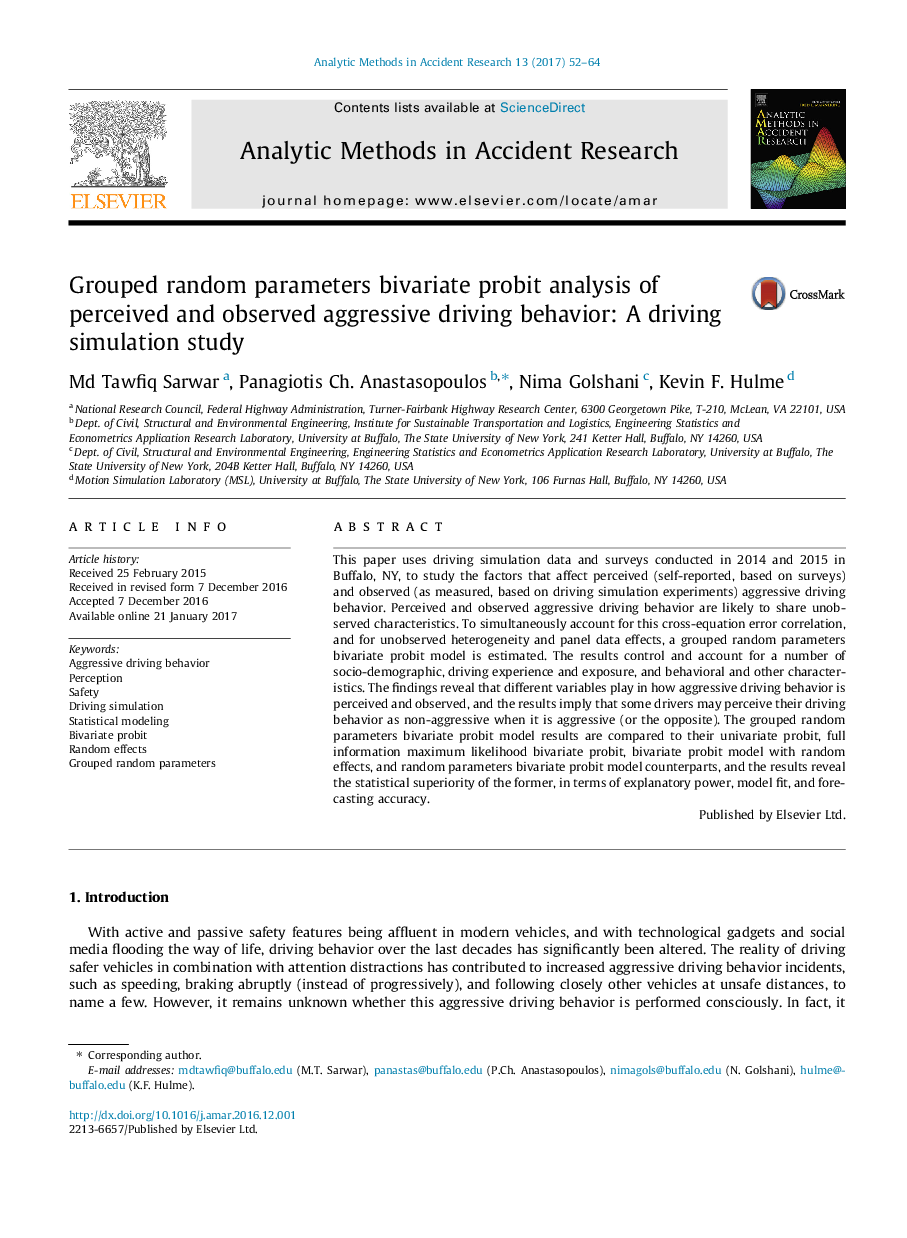| کد مقاله | کد نشریه | سال انتشار | مقاله انگلیسی | نسخه تمام متن |
|---|---|---|---|---|
| 5124673 | 1488234 | 2017 | 13 صفحه PDF | دانلود رایگان |
- Perceived and observed aggressive driving behavior is modeled simultaneously.
- A grouped random parameters bivariate probit model is estimated.
- Different factors play in how driving behavior is perceived and observed.
- Some drivers perceive their driving behavior as non-aggressive when it is aggressive.
- The proposed model statistically outperforms its model counterparts.
This paper uses driving simulation data and surveys conducted in 2014 and 2015 in Buffalo, NY, to study the factors that affect perceived (self-reported, based on surveys) and observed (as measured, based on driving simulation experiments) aggressive driving behavior. Perceived and observed aggressive driving behavior are likely to share unobserved characteristics. To simultaneously account for this cross-equation error correlation, and for unobserved heterogeneity and panel data effects, a grouped random parameters bivariate probit model is estimated. The results control and account for a number of socio-demographic, driving experience and exposure, and behavioral and other characteristics. The findings reveal that different variables play in how aggressive driving behavior is perceived and observed, and the results imply that some drivers may perceive their driving behavior as non-aggressive when it is aggressive (or the opposite). The grouped random parameters bivariate probit model results are compared to their univariate probit, full information maximum likelihood bivariate probit, bivariate probit model with random effects, and random parameters bivariate probit model counterparts, and the results reveal the statistical superiority of the former, in terms of explanatory power, model fit, and forecasting accuracy.
Journal: Analytic Methods in Accident Research - Volume 13, March 2017, Pages 52-64
